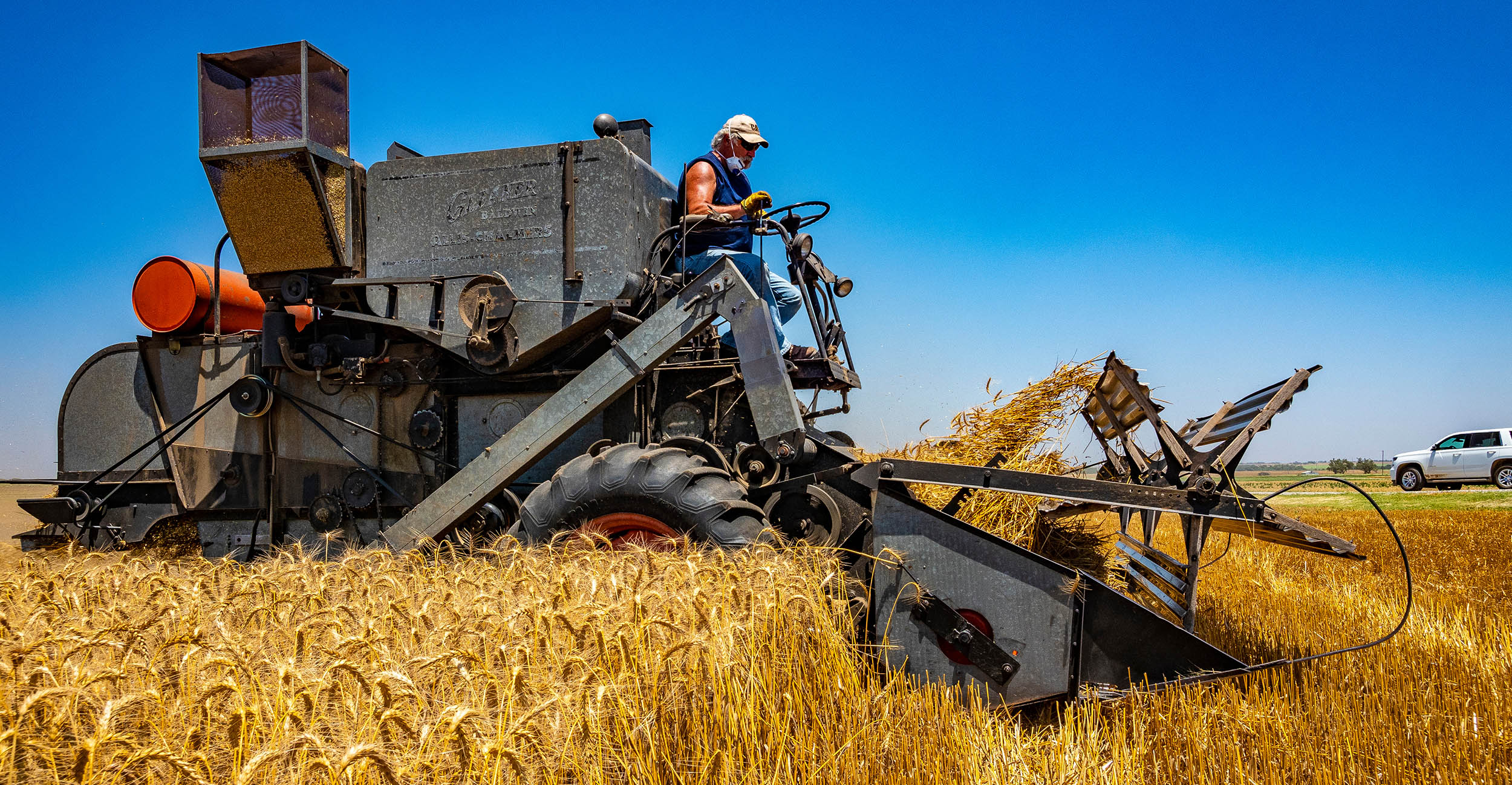
Long-term fertility trial reaches its 50th harvest
Tuesday, June 29, 2021
Media Contact: Alisa Boswell-Gore | Agricultural Communications Services | 405-744-7115 | alisa.gore@okstate.edu
One of the youngest crops in a series of Oklahoma State University’s long-term wheat fertility trials recently reached its 50th harvest.
In 1965, researcher Billy Tucker started establishing long-term wheat fertility studies throughout Oklahoma, beginning with two trials in Altus.
The rest is history.
“When he did this, fertility trials were being done across the United States, but they were never maintained,” said Brian Arnall, researcher and endowed professor in the OSU Department of Plant and Soil Sciences. “We have been truly blessed at OSU to have a continuity of researchers and administrators who understand the importance of the trials. It takes a lot of commitment and labor, and OSU Ag Research understands the importance these locations have for Research and Extension.”
Fertility trial 502 in Lahoma is the trial that turned 50 last week.
“New science is developed on a regular basis, leading to new understandings of crop response to nutrients,” Arnall said. “The trials were critical in the development and implementation of the GreenSeeker sensor technology.”
GreenSeeker is a nationally used tool developed by OSU Ag Research scientists that tells producers how much fertilizer they need to use on their crops by detecting how much nitrogen exists in the soil. Soil nitrogen varies from season to season due to climate variability.
OSU researchers have learned wheat crops are dynamic and changing, so while producers may need a heavy amount of fertilizer in a crop with low yield, they may need little fertilizer in a crop with high yield. The application of a few extra pounds of nitrogen used to be a security measure for wheat crops, but now, due to environmental changes and other factors, it can be a risk, Arnall said.
“Fertilizer makes up the difference for nitrogen a wheat plant needs. The historic mentality was we fertilize more, we yield more. That relationship has been torn apart with this long-term data, because that is not the case,” he said. “The environment and crop system are much more unpredictable and dynamic. This led to developing a technology like GreenSeeker. It’s really changed the way we see nitrogen management.”
The long-term research can also lead to other innovative studies, such as OSU soil microbiologist Shiping Deng finding that cyanobacteria produces nitrogen in non-fertilized crops. Currently, her colleague — soil chemist Andrea Jilling — is studying the long-term biological activity of the soil. Other research conducted through the soil fertility trials can be viewed on the OSU website.
“Farming can be on the margins of profitability, so saving even slightly on inputs such as fertilizer can have a big impact on the sustainability of the enterprise,” said Keith Owens, associate vice president of OSU Ag Research. “These long-term plots are invaluable for determining soil fertility over multiple growing seasons.”
OSU still manages nine active sites for the trials out of the original 19, with dozens of research publications stemming from the research and data and new reports published annually. The Magruder plots trial, the first of the OSU fertility studies, was established much earlier than the rest of the plots. It was established by A.C. Magruder in 1892 and is one of the oldest long-term fertility studies in the world. It has also been established as a historic landmark.
